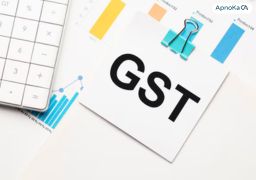# taxcompliance
12 posts in `taxcompliance` tag
.jpg)
A Simplified TDS System: How One Rate, One Section Reduces Tax Hassles
A revolutionary move toward streamlining tax compliance is the Indian government's proposal to implement a single rate and section for Tax Deduction at Source (TDS). This program seeks to reduce compliance obligations, promote a pro-business environment, and remove the confusion brought about by different rates and sections. Find out how this change helps taxpayers, simplifies compliance, and supports India's objective of raising the Ease of Doing Business index.

Leveraging Sections 54 and 54F for Tax Exemptions in Property Transactions
This blog explores Sections 54 and 54F of the Indian Income Tax Act and explains how they exempt individuals and HUFs from paying taxes on capital gains when they reinvest them in residential real estate. To ensure clarity for taxpayers, the essay also discusses frequent disagreements, court rulings, and helpful advice for claiming exemptions.
.png)
Avoid GST Penalties: How to Use Section 128A Forms for Waiver of Interest and Penalties
The purpose of the GST Amnesty Scheme is to help businesses who are having trouble complying with the GST law by waiving fines and interest in a number of ways under Section 128A. This blog offers a step-by-step tutorial on how taxpayers can apply for relief as well as an explanation of the purpose of these forms (GST SPL-01 to SPL-05). Businesses can manage the process efficiently and steer clear of further legal difficulties by adhering to the proper regulations.
.png)
Reduced TDS Rates: Beneficial to Both People and Businesses
In order to lessen the tax burden on different types of payments, the TDS rates under Sections 194-IB, 194-DA, 194-G, 194-H, 194-M, and 194-O have recently changed. The TDS rate for insurance commissions, life insurance payouts, lottery commissions, brokerage fees, and rent payments will be lowered from 5% to 2% as of October 1, 2024, and April 1, 2025. A 2% tax under Section 194M will also be applied to payments made by non-auditable businesses to contractors and professionals. In addition, Section 194-O will apply a reduced TDS rate of 0.75% to e-commerce transactions. These adjustments aim to increase tax compliance across a range of industries and enhance liquidity for professionals, small enterprises, and individuals.
.png)
Relief for Charities & Trusts: CBDT Extension of Audit Reporting Deadline
The Central Board of Direct Taxes (CBDT) has extended the deadline for trusts and charities to file their audit reports (Form 10B/10BB) until November 10, 2024. This extension provides relief to organizations struggling to meet the original deadline of October 31, 2023.
.png)
Understanding the New RCM Rules for Rental of Immovable Property
This blog post explains the recent changes to the Reverse Charge Mechanism (RCM) for property rentals in India. Landlords of commercial properties are now responsible for paying GST on behalf of unregistered tenants. The changes take effect on October 10, 2024. Businesses must update their accounting systems and seek professional advice to ensure compliance.
Understanding Section 139(5) of the Income Tax Act: A Comprehensive Guide
A thorough explanation of Section 139(5) of the Income Tax Act can be found in this blog post. It describes what a defective return is, how to fix a defective return, and the possible repercussions of filing a defective return. Taxpayers can guarantee compliance with income tax legislation and prevent penalties by being aware of Section 139(5).
.png)
A Comprehensive Analysis of Advance Rulings in Indian Income Tax: Section 158AB
This blog post offers a thorough explanation of Income Tax Act Section 158AB, a significant clause that gives taxpayers the ability to get preliminary decisions on controversial tax issues. The blog provides an explanation of Section 158AB's goals, application, process, consequences, and restrictions. It also emphasizes how these rulings are provided by the Authority for Advance Rulings (AAR). Taxpayers can reduce the likelihood of conflicts and successfully navigate the intricacies of the Indian income tax system by being aware of Section 158AB.
.png)
2024: Managing GST Refund Requests: A Comprehensive Guide for Companies
This article offers a thorough overview of managing GST refund requests in 2024, including information on the revised procedures, qualifying standards, required paperwork, and filing guidelines. It also discusses typical errors and difficulties that companies go into while submitting GST refund claims. Keep yourself updated on significant developments to guarantee effective cash flow and tax law compliance.
.png)
Form 1 of DTVSV 2024: Online Filing, Deadlines, and Penalties
Form 1 for the Declaration of Taxable Value of Securities (DTVSV) 2024 is now available for online submission. By October 31, 2024, taxpayers who own securities as of March 31, 2024, must submit this form. Up to December 31, 2024, a late return may be submitted; however, there will be a ₹1,000 penalty. In the event that the form is not submitted by the stipulated deadline, there will be a penalty of ₹10,000 and potential interest on unpaid taxes. Find out how to easily file Form 1 online and make sure you're following the DTVSV rules.

Restoring Archived GST Return Data: An All-Inclusive Guide for Taxpayers
This blog explores the importance of providing Indian taxpayers with access to their historical GST return data. It gives taxpayers a step-by-step tutorial on how to obtain and analyze their prior returns and describes the goals and extent of the restoration procedure. It highlights the advantages, like improving compliance, maximizing taxes, and fixing mistakes. In order to reduce penalties, the essay also emphasizes the significance of prompt action and expert counsel.

The Most Important Changes to the New TDS Regulations for 2024
The Income Tax Department will implement new TDS (Tax Deducted at Source) laws on October 1, 2024, with the goal of reducing tax evasion and enhancing compliance. Raised TDS thresholds for independent contractors, new real estate sales regulations, cash payments, and rent payments to non-resident landlords are some of these modifications. To ensure that taxpayers stay compliant, this blog offers a thorough summary of all the latest regulations and how they affect different transactions.
